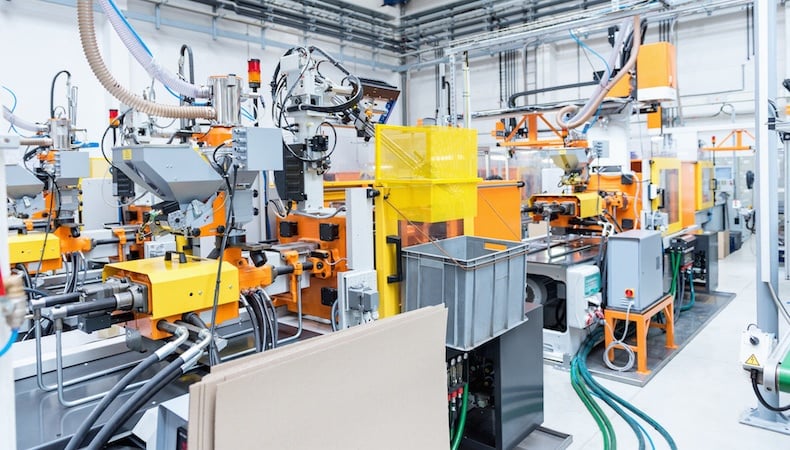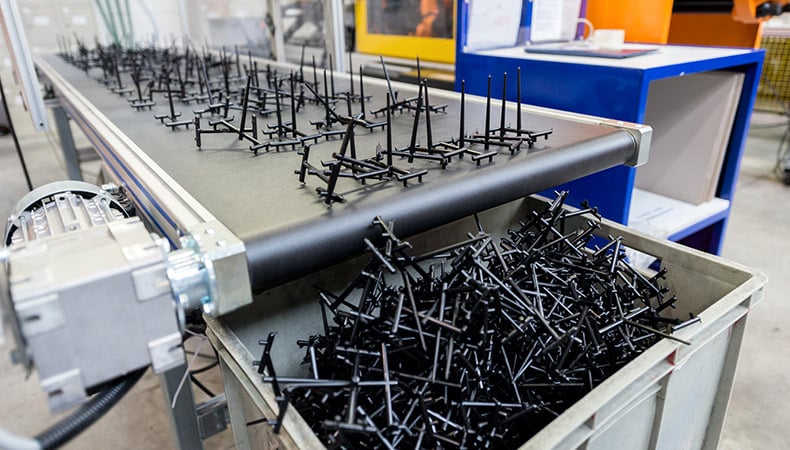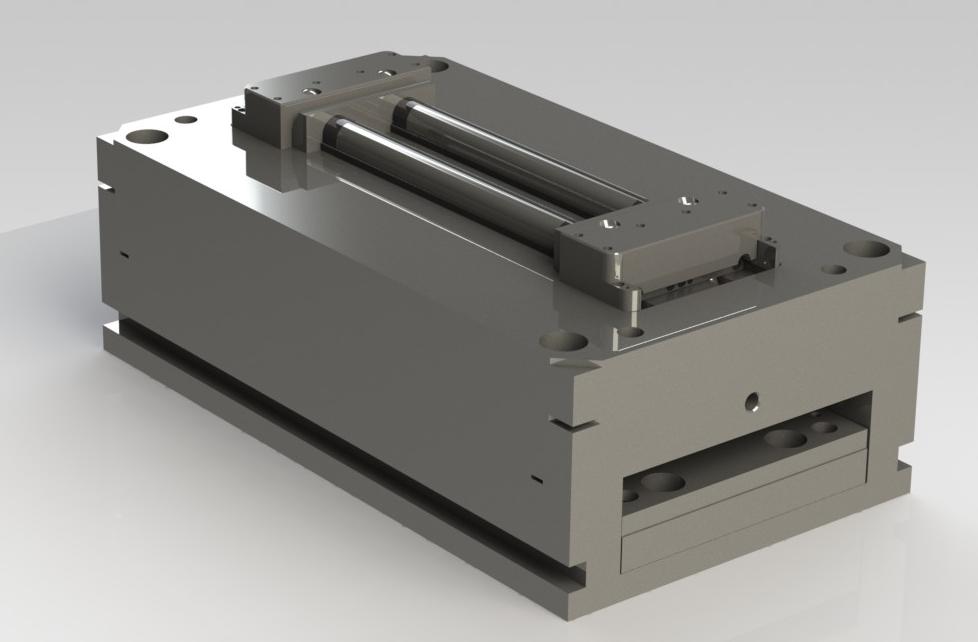Exploring the Future of Plastic Injection Molding in the Manufacturing Market
Exploring the Future of Plastic Injection Molding in the Manufacturing Market
Blog Article
The Future of Plastic Injection Molding: Patterns and Technologies to Enjoy
As the plastic injection molding sector progresses, a number of essential fads are arising that assurance to reshape its landscape. Automation and smart manufacturing techniques are established to improve efficiency, while the shift in the direction of sustainable materials mirrors an expanding environmental consciousness.
Automation and Smart Production
As the plastic injection molding sector progresses, automation and wise production are taking spotlight, reinventing manufacturing processes - Plastic Injection Molding. The integration of innovative innovations such as robotics, IoT (Net of Points), and synthetic knowledge is allowing suppliers to boost effectiveness, decrease functional costs, and boost product high quality. Automated systems streamline operations, reducing hands-on intervention and boosting throughput, which is vital in fulfilling the rising need for quick production cycles
Smart making modern technologies promote real-time monitoring and information evaluation, allowing business to optimize device efficiency and predict maintenance needs. This positive strategy not only lessens downtime but likewise prolongs the life-span of devices. Moreover, making use of joint robotics, or cobots, enhances the versatility of assembly line, making it possible for workers and makers to operate side by side safely and successfully.
The adoption of automation in plastic injection molding is not simply a pattern however a critical important for services intending to stay affordable in a worldwide market. By using these modern technologies, suppliers can attain greater accuracy, lower waste, and adjust quickly to altering client demands, positioning themselves for sustainable growth in an increasingly automated future.
Lasting Products and Practices
The press towards automation and smart manufacturing has led the way for a higher emphasis on sustainable products and techniques within the plastic shot molding market. Companies are increasingly looking for green options to standard petroleum-based plastics, resulting in the adoption of recycled and bio-based products. These sustainable products not just decrease environmental influence however also align with customer demand for greener items.

Furthermore, collaboration between manufacturers, material suppliers, and environmental organizations is fostering innovation in the development of sustainable materials that fulfill efficiency criteria without endangering top quality. As laws around plastic use end up being stricter, the market is positioned to adjust by embracing these sustainable techniques, ensuring long-term feasibility and lowering reliance on non-renewable sources. The integration of sustainability right into plastic shot molding is not just a trend; it is becoming a vital component of corporate responsibility and functional quality.
Advancements in 3D Printing
Recent advancements in 3D printing modern technology are substantially transforming the landscape of plastic injection molding. Impossible or when challenging to attain through typical techniques, the integration of additive production processes permits for the fast prototyping of intricate geometries that were. This ability not just speeds up item development cycles yet also lowers material waste, straightening with the growing need for sustainable manufacturing techniques
Furthermore, the appearance of hybrid production techniques, which integrate 3D printing and shot molding, offers makers the ability to produce detailed designs while preserving the performance of mass production. This technique makes it possible for the production of personalized components tailored to particular client needs without sacrificing the speed and scalability that shot molding gives.
Additionally, improvements in products, such as high-performance polymers and compounds specifically developed for 3D printing, are improving the useful capacities of printed components. These materials can stand up to better stress and exhibit improved thermal buildings, making them suitable for more demanding applications.
As 3D printing continues to develop, its combination right into plastic shot molding procedures guarantees to improve performance, lower prices, and foster technology in item layout, placing suppliers to much better fulfill the obstacles of an open market.
Information Analytics and IoT Assimilation
Information analytics and the combination of the Web of Things (IoT) are transforming plastic injection molding by offering producers with unprecedented insights right into their procedures. By leveraging real-time information gathered from interconnected devices and sensors, manufacturers can monitor efficiency metrics, recognize ineffectiveness, and enhance production procedures. This data-driven strategy assists in predictive maintenance, reducing downtime and expanding devices lifespan.
Furthermore, IoT assimilation permits for improved quality control. By continually tracking variables such as stress, temperature, and cycle times, suppliers can swiftly find inconsistencies from developed specifications and make adjustments in actual time. This not only boosts product uniformity but also lowers waste and scrap prices.
The fusion of data analytics and IoT technologies also empowers manufacturers to take on even more dexterous manufacturing strategies. With access to thorough data analytics, companies can reply to market needs with greater versatility, adjusting production timetables and setups as required. This adaptability is use this link crucial in a rapidly altering production landscape.

Modification and Layout Adaptability
How can customization and design flexibility enhance the competition of plastic shot molding? In a significantly varied market, the capacity to use customized options is vital. Personalization enables makers to satisfy particular client requirements, suiting one-of-a-kind measurements, shapes, and performances that basic products might not accomplish. This versatility not only fosters customer commitment yet likewise opens avenues for brand-new service opportunities across numerous markets, from automobile to consumer items.
Developments in layout innovations, such as computer-aided design (CAD) and fast prototyping, further boost this trend. These devices enable developers to create detailed patterns and complicated geometries, which can be discover here flawlessly integrated right into the production procedure. Therefore, producers can react swiftly to altering customer preferences and market needs.
Moreover, the application of modular tooling systems boosts design versatility, permitting quicker modifications in between various product styles without considerable downtime. This adaptability can cause lowered lead times and lower manufacturing prices, making companies a lot more dexterous and competitive. Inevitably, embracing personalization and style adaptability in plastic injection molding not only elevates item offerings yet additionally strengthens market positioning in an ever-evolving landscape.
Conclusion
The future of plastic shot molding is identified by this link substantial advancements in automation, sustainable methods, and ingenious products. The assimilation of IoT and information analytics will certainly enhance operational efficiency and predictive upkeep. The adoption of bio-based and recycled materials, together with progression in 3D printing, will promote sustainability within the industry. Customization through modular tooling and quick prototyping will certainly enable manufacturers to continue to be responsive and competitive to the dynamic needs of the market.

The future of plastic shot molding is identified by substantial developments in automation, sustainable methods, and cutting-edge products.
Report this page